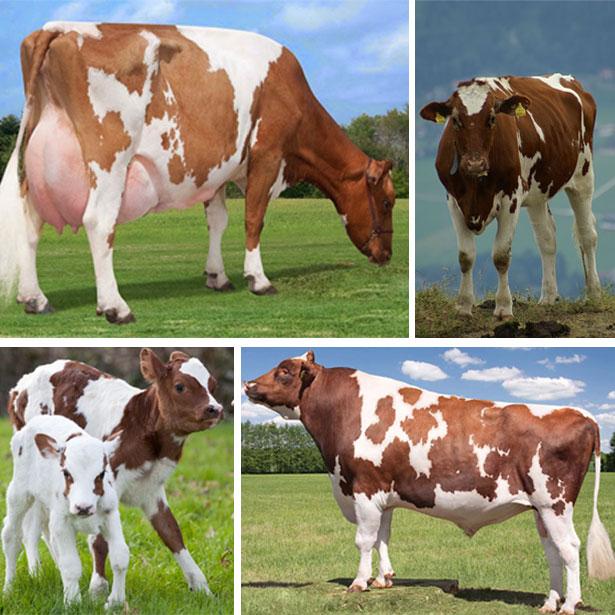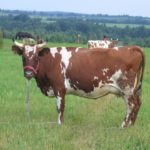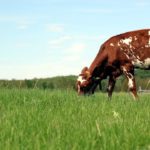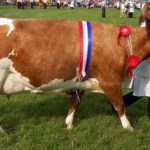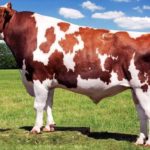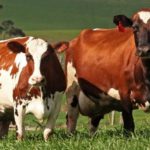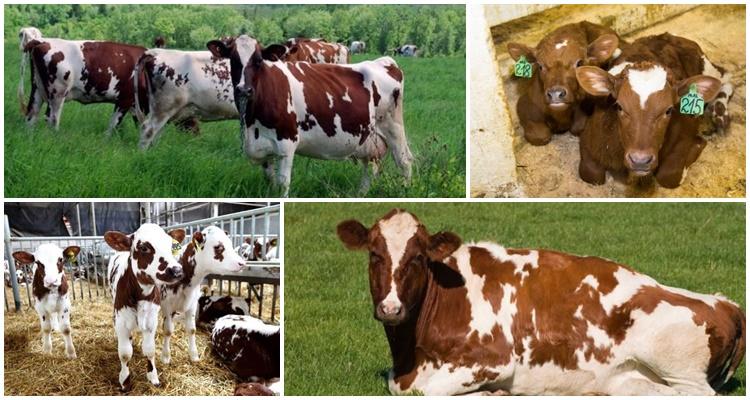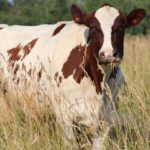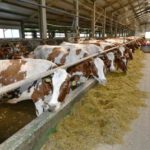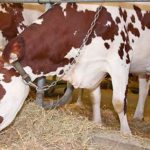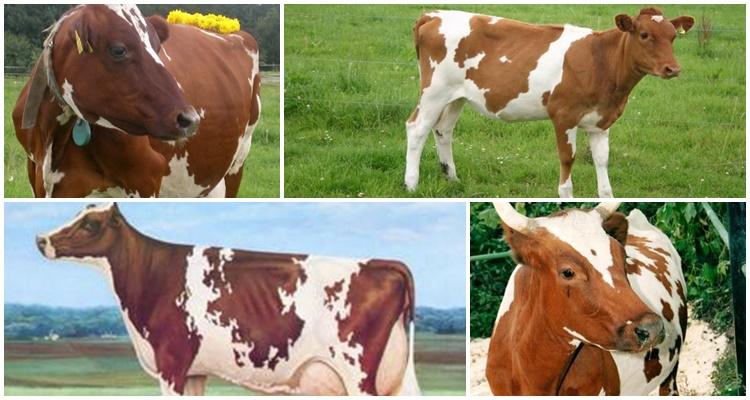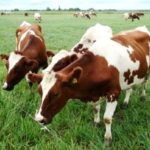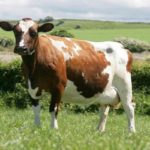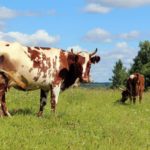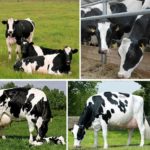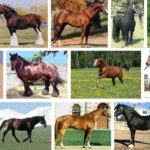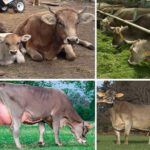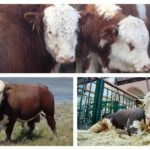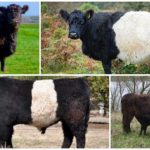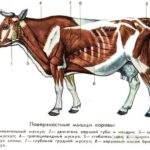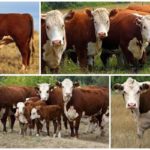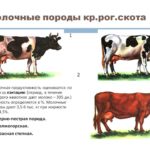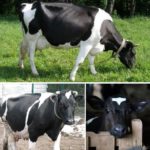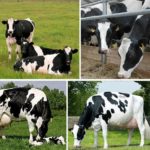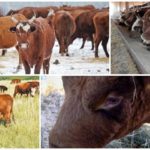The Ayrshire cow is a well-deserved leader among dairy cattle breeds in terms of milk yield, quality and beneficial composition of milk. Not only high-quality dairy products have determined the popularity of the Ayrshire breed; among the advantages of the breed, it is also necessary to mention unpretentiousness in maintenance and nutrition, adaptation to cold climates, problem-free calving, strong immunity, and beautiful color.
Origin story
The Ayrshire breed is of Scottish origin, the name is given from the county of Ayrshire, in southwestern Scotland. The breed was officially registered in the 1960s. Ancestors – Scottish wild bulls, representatives of the Dutch, Alderney, Tyswater breeds. In the USA, Aishirs appeared in the 1860s; in Canada, breeding of the breed began in the 1870s.
Since Ayrshire cows are adapted to cold climatic conditions, they are most widespread in the northern regions of temperate climates: Scandinavia, the USA, and Canada. Calves were brought to Russia from Finland; today large herds are located in Karelia and the Leningrad region.
In Russia there are large breeding farms whose specialization is the Karelian breed: Federal State Institution “Novoladozhsky” (Volkhovsky district of the Leningrad region), Federal State Budgetary Institution SGC “Smena” (Sergiev Posad district). In terms of population size, the Kashira breed in Russia is second only to Finland.
Habitats
Finland is a country with ideal climatic conditions for Ayrshire cattle; the population size here exceeds 150 thousand individuals. Finnish farmers managed to organize the raising of Ayrshire cattle so well that cows live up to 20 years, and annual milk production reaches 11,000 liters of milk per individual. In Russia, the Ayrshire breed is bred mainly in the northwestern and western regions of the country:
- Karelia;
- Komi Republic;
- Moscow region;
- Leningradskaya;
- Novgorodskaya
The Russian population of the Ayrshire breed is about 90 thousand individuals. The average annual milk yield is 8000 liters. The cost of 2 kg of live weight is 200-250 rubles. For an adult animal you will have to pay about 100 thousand rubles, and breeding bulls and cows are rated higher.
Description and productivity of the breed
Ayrshire cows are medium-sized and have a harmonious build.
Detailed characteristics of the Ayrshire breed are given in the table:
| Height | up to 125 cm |
| body length | up to 155 cm |
| weight | bull – up to 800 kg, cow – 450 kg |
| head | small, elongated, standard shape |
| torso | stocky, not massive, wide, a dewlap hangs from a narrow chest, the back is straight, the skeleton is thin, with movable joints, muscle mass is well developed |
| limbs | short, straight, strong, stable hooves, adapted for movement in mountainous terrain |
| horns | large, upward, widely spaced, curved, yellowish in color (in large farms, the horns of newborn calves are immediately burned, which is why a large percentage of the world's livestock is polled) |
| udder | neat, regular cup-shaped, soft and elastic skin, cone-shaped or cylindrical nipples, widely spaced, convenient for attaching a milking machine (milk output rate - 2 liters per minute) |
| color | white with red-brown spots or brown with white spots |
Ayrshire is a dairy breed. The duration of lactation is long, reaching 305 days. A breeding cow remains productive until 15-17 years of age. Moreover, older cows do not lag behind their young relatives in terms of milk yield.
Indicators of milk from an Ayrshire cow:
- average annual milk yield – 8500 l;
- milk fat content – 4.2%;
- protein content – 3.5%;
- the percentage of tissue particles is minimal.
Due to its high protein and nutrient content, milk from Ayrshire cows is suitable for the production of cheeses, cottage cheese, butter, and baby food. Mostly males are raised for meat.Bulls quickly gain muscle mass, productivity is average - slaughter weight - up to 50% of the animal's weight. Also, Ayrshire cattle are often used in breeding for crossing with other breeds in order to obtain offspring with high milk productivity.
Pros and cons of Ayrshire cows
The Ayrshire breed is popular among farmers because cows have many advantages:
- quickly adapt to climatic conditions in the growing area (not suitable only for hot regions);
- not capricious in care, maintenance, feeding;
- hardy, easily overcome long distances between pastures;
- live long, are distinguished by good health and lively, active behavior;
- do not have genetic pathologies;
- enter puberty early;
- have high milk yield, independent of the season.
The Ayrshire breed has few disadvantages:
- sensitivity to heat (especially combined with high humidity);
- waywardness and aggressiveness of bulls;
- timidity and obstinacy of females during milking;
- the need for an active lifestyle (year-round housing in stalls is unacceptable).
Conditions of detention and care
You can keep an Ayrshire cow both in a stall and on a pasture. The method of housing does not affect the milk yield. But when kept in stalls, regular walking in the pen is necessary. In summer, a canopy is placed over the paddock to prevent the cows from being damaged by the sun. Ayrshires can withstand low temperatures, but the heat is unbearable for them, and milk yield is significantly reduced because of it.
Stall
The barn should be well lit, but the light should not shine into the animals' eyes. The floor in the stalls is made of planks and straw is laid on top.The stall must match the size of the cow. To tie up livestock, pipes 10 cm in diameter are installed.
Feeders
If the cows are in a stall, then a feed bowl is installed in front. If livestock moves freely around the barn, then the feeders are mounted so that the animals do not accidentally knock them over.
Post-calving care
The birthing process is easy, and newborn calves almost always survive. An Ayrshire cow is ready to give birth to her first calf at 2 years of age. A born calf weighs about 30 kg.
After calving, the owner must remove the placenta. After 30 minutes, give the woman in labor hay and warm water. A calving cow should be milked 4-5 times a day.
Cleaning the stall
To keep your Aishirka healthy, it is important to regularly clean the barn and stall. Animals are taken outside before the procedure. The owner must remove manure, change rotten bedding, and wash feeders and drinking bowls.
Diet
During the summer months, Ayrshire cows forage on pasture. In winter, stall housing is used.
The basis of the winter diet is hay, supplemented with cereal husks, cake, meal, husks to increase milk yield and improve the quality of milk. Compound feed should be given in moderation, since excess consumption causes disruption of the digestive tract. Particular care should be taken when feeding mixed feed with a high starch content; the daily portion should not exceed 2 kg.
Silage consumption by cows should also be moderate. It is better to add juicy plant foods to your diet: potatoes, beets, carrots, pumpkin. Approximate winter daily ration for an Ayrshire cow weighing 500 kg:
- 2 kg of hay;
- 4 kg of feed;
- 25 kg silage;
- 2 kg barley grains;
- 6 kg of dry beer grains;
- 2 kg of wheat bran;
- 3 kg beet pulp.
As a source of minerals, the cow is given 80-100 g of table salt daily, and the animal should receive vitamin supplements in the same amount. The daily rate of water consumption is 40 liters. The transition from winter stabling to summer grazing should be gradual. Due to a sudden change in diet, a cow's rumen may become swollen.
Breeding Features
If a farmer plans to breed the Ayrshire breed for the sale of dairy products, then the herd should consist predominantly of females. If breeding activities are planned, then it is necessary to carefully monitor the breed line of bulls that appeared from one progenitor.
There are 2 breed lines:
- genealogical - including bulls that have different pedigrees, but are related by a common ancestor;
- factory - including animals carefully selected to maintain quality breed characteristics.
The breeding process looks like this: the breeder selects a bull, evaluates the calves born from it, and selects the best calf in terms of breed qualities for breeding. The selected bull produces offspring, from which the best calf is also selected for breeding. This method works up to the 4th generation, after which the quality characteristics of the breed disappear.
Diseases and methods of combating them
Ayrshire cows have strong immunity, but there is no 100% protection against bacterial and viral pathologies. Representatives of the breed may also experience poor health due to improper care and maintenance.
Common diseases:
- Leukemia is a fatal tumor disease caused by an oncological virus that affects the circulatory and lymphatic systems.
- Actinomycosis is a fungal pathology that requires surgical intervention in advanced cases. At the initial stage, antifungal medications are effective. A pathogenic fungus develops on the skin wounds of the cow, which is why a fistula gradually forms.
- Leptospirosis is a bacterial infection that affects soft internal organs. Antibiotics are used for treatment.
- Brucellosis is an infectious pathology that leads to miscarriage. The infection is also dangerous for the human body. The cow is treated with antibiotics.
- Foot and mouth disease is a viral infection dangerous to animals and humans, accompanied by fever and ulceration of the integument. With a malignant course, the cow dies. Treatment is symptomatic, using agents to support the heart and relieve pain from the ulcers until the surviving cow develops immunity.
- Rabies is a fatal viral disease. The animal is slaughtered and the carcass is burned.
- Tuberculosis is an infectious disease associated with improper maintenance in the winter, manifested by fever, cough, and heavy breathing. There is no medicine, sick individuals are slaughtered.
- Pneumonia occurs under unfavorable temperature conditions in the barn. The disease is accompanied by fever, heavy breathing, and pulmonary wheezing. Animals are treated with antibiotics.
- Mastitis is an inflammation of the mammary glands, accompanied by swelling and pain. For treatment, the veterinarian prescribes antibiotics, anti-inflammatory drugs, and udder massage.
The infected cow must be isolated from the herd for the period of treatment. Prevention of viral diseases - vaccination of livestock, proper care and provision of comfortable living conditions.

